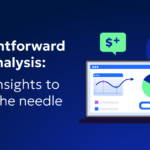
How CFOs Can Cut Cloud Costs Without Diminishing Value

VP Finance
Netflix is on it, Elon Musk demanded that Twitter get on to it and NetApp is dealing with it too. The reality is that in today’s economic uncertainty no company, especially a digitally native company, can afford not to deal with cloud costs.
In an all too well-rehearsed cycle, companies know that when a recession hits they need to pull out of growth mode, tighten the belt, and identify where they can cut the excess. But it’s a precarious task that usually starts on the top two budget line items; staff & infrastructure. The problem is layoffs come with the consequence of weakening morale and damaging external branding. Yet cutting infrastructure comes with its own perils of undermining product performance and reliability.
But cutting infrastructure costs doesn’t necessarily have to undermine product performance. From my experience of working 15 years in the SaaS industry, it is safe to say that most companies experience some degree of cloud waste. Companies easily spin up instances at the click of a button and then forget about them, they are procuring storage volumes that are sitting around obsolete and obtaining discount tokens that don’t get properly utilized.
The cloud should be the #1 place to start when it comes to cutting infrastructure costs. There is typically a lot of low-hanging fruit that can be removed easily and when done intelligently thousands, if not hundreds of thousands, of dollars can be saved.
The Easy Wins
In all digital native organizations, there are cloud resources that have been purchased but never used, not contributing to product performance and yet compounding cloud costs every month. This happens for a variety of reasons, some more reasonable than others.
Too often it is due to accidents and lack of oversight, where instances and storage can easily get spun up for testing purposes and then forgotten about. These cloud resources, whether EC2 instances, storage volumes, load balancers or even elastic IPs can easily be identified with a cloud cost monitoring tool and cleaned up.
Other times unused resources get generated when the focus is on developing fast and cost savings take a back seat. When the markets are looking good and companies are in growth mode, operational shortcuts tend to be taken where default settings are used for provisioning, irrespective of how the resource is used. With DevOps hours being an expense in itself, this saves precious time from calculating usage forecasts, and then planning the right amount for each circumstance.
A good cloud cost optimization tool should be able to tell you when the resources that you’re using are under-utilized and the healthy range that you can scale it down towards. While clearing up these wasted resources isn’t too arduous, the challenge comes in laying the framework of how the right resources should be selected in the future.
Finally, another reason is part of a risk management strategy. Cloud infra teams intentionally over-provision in case of a massive usage spike. For example, many companies will over-provision their block storage by roughly 300%. This avoids the risk of application failure due to insufficient storage space during a peak traffic season or event.
Unquestionably, this one is the most difficult cost to cut. The logic to prioritize application performance over cost is sound. And the solution isn’t easy, but it requires a different approach in the way we think about and provision infrastructure.
Dynamic Cloud Infrastructure
When it comes to managing the cloud there is a major disconnect between infrastructure and product usage. While usage changes, infrastructure doesn’t. Companies buy their cloud infrastructure in static, non-malleable portions whether it is an instance of a certain family type or a storage volume of a specific size. Once you have it, that resource sets the limitation that your application has to work within. The problem is application usage is anything but static. An application requires different resources depending on whether it’s being used in development, QA, or production. Also, take into account the exact time during the week, the time of the year, how the application is used, and even where in the world it is being used.
The only way infrastructure is going to be able to do this is by becoming dynamic. Technology companies like Zesty are helping organizations make their infrastructure more dynamic, enabling them to scale resources so that they’re only paying for what they use while simultaneously ensuring resource availability even during peaks in demand.
Automate for Savings at Scale
While resources can be adjusted manually, to do it at a scale that will deliver both substantial savings and ensure performance stability, it has to be automated. Zesty’s solution for storage is adjusting each volume several times a day. In environments that have thousands of volumes, it’s impossible to have a human team of engineers replicate that effort. In terms of ROI, CFOs need to evaluate the greater efficiency that can be generated by using automated software against the alternative of manual resource allocation.
Establishing a Flywheel for Growth
Come a recession and the automatic response is to knuckle down on the expense line. Really the opportunity should be grabbed to establish a lean and agile operation that can become a flywheel for growth.
Establishing a lean and efficient cloud operation may be imperative now to minimize cost margins, but when times are good, that cost efficiency only compounds as your cloud footprint grows. For example, that discount program that’s being upscaled now to cover 90% of workloads, will continue to cover 90% of your workloads even if your company doubles its compute.
But you also need to focus your cost-efficiency efforts on where it matters most, and that is your gross margin. Many investors hold the gross margin as the single most significant number to determine the health of a SaaS company because while all other expenses are adjustable the pure cost of operating your product is less so. If the gross margin is informed by the cost of revenue, it’s important to realize that out of all the expenses hitting your cost of revenue, the expense of operating your product in the cloud is likely to be the most significant. Every effort you put into reducing the cost of operating your product has a direct impact on widening your gross margin.
Operational cloud costs can be tackled by perceiving infrastructure as dynamic, rather than static. With this mind shift, assumed set expenses can be brought down as usage decreases. At the same time, a dynamic perception of infrastructure also ensures application performance is not just ensured, but improved as it is no longer subject to insufficient allocations. Best of all, it means that jobs that build value are kept, even as the going gets tough.
Want to see how you can put Dynamic Cloud Infrastructure in action? Contact one of our cloud experts now!
Related Articles
-
 Zesty introduces Insights: actionable recommendations for immediate cloud savings
Zesty introduces Insights: actionable recommendations for immediate cloud savings
July 24, 2024 -
 Zesty introduces Commitment Manager for Amazon RDS!
Zesty introduces Commitment Manager for Amazon RDS!
July 10, 2024 -
 How to clear budget for AI implementation?
How to clear budget for AI implementation?
June 18, 2024 -
 Ensure precision in cloud resource allocation: Control mechanisms you need
Ensure precision in cloud resource allocation: Control mechanisms you need
June 16, 2024 -
 Straightforward cloud cost analysis: Clear Insights to move the needle
Straightforward cloud cost analysis: Clear Insights to move the needle
June 11, 2024



